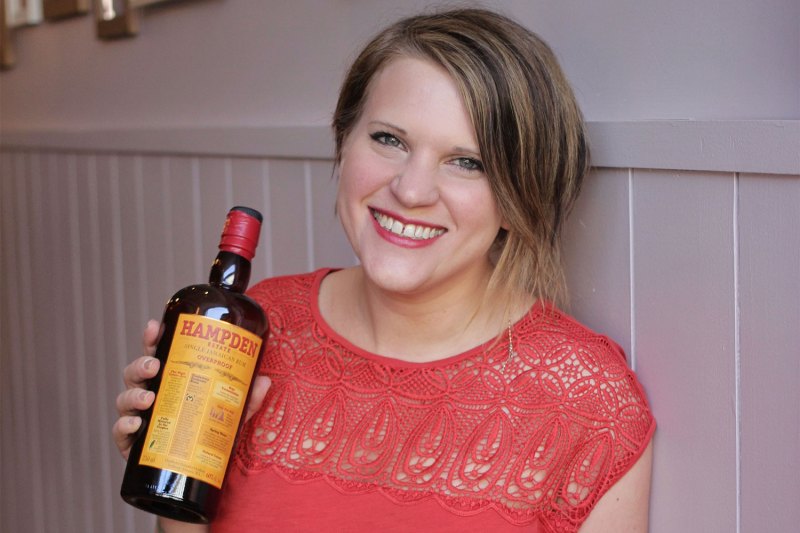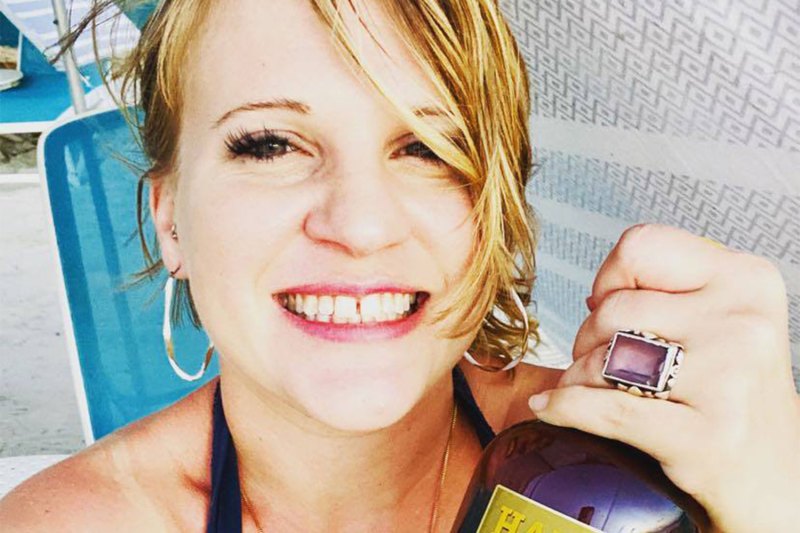From bartender to U.S. market manager for one of the spirit industry’s most noteworthy global distributors, and independent bottlers, La Maison & Velier, Kate Perry eats, sleeps, and breathes rum. Rum is a polarizing category, most people love it or hate it; but it’s also one that the general consumer knows little about.
If you are lumped into the category of knowing very little, then you’re in the right place to learn a bit about one of the world’s most diverse spirits. We sat down with the rum queen herself for an in-depth interview where she discloses what drinkers should be looking for in rums, why you should be drinking them, and why her job is pretty damn cool.
The Manual: Your job is pretty awesome. Could you explain a little bit about what a typical day on the job looks like for you?
Kate Perry: I often say I have the best job in the world, but I really mean it! It’s pretty great and it allows me to partake in things I love — amazing adventures, amazing people, amazing rum.
I was a huge fan of these spirits before I started with LM&V, so it rarely ever feels like work. After spending a day visiting retailers, restaurants, and bars, I typically host events: Educational tastings, happy hours, dinners. Again, sharing spirits like Spirit of Haiti Clairin and the incredible Hampden Estate is such a joy for me. Often it feels more like swapping stories over a pour than like work.

The rest of the time, and most of what I do, isn’t as glamorous. I manage our national distribution — when we launched in the U.S in 2018 we were started in New York and expanded to California. As of this year we are in 20 states in the U.S, so we’ve grown quite a lot and rather quickly in a three-year span. I spend a lot of time on spreadsheets and emails. My day to day is a pretty wide scope of activity from working with the TTB on label approval, preparing for shipments, managing registrations and orders, answering inquiries, and general problem solving for a whole host of situations.
TM: What’s your elevator pitch for selling someone on rum who isn’t a fan of the category?
KP: This is a great question because I don’t think it’s possible! The category is too immense and too diverse to not be a fan of it. I think that people who think they “don’t like rum” just haven’t found the right one for them yet. Rum is like sandwiches: You can’t just not be into them because the category is too broad; maybe you aren’t into tuna fish ‘sandos,’ but you love a gooey grilled cheese, or a crisp turkey club. The category of rum includes such a wide array of flavor profiles, even within islands and countries themselves you can find huge diversity.
TM: What should spirit enthusiasts look for when buying rum?
KP: It depends on what kind of sandwich you like! With such an immense and diverse span of flavor, texture and vibe, my first advice would be to keep trying new things. I’ve heard many times that ‘Oh I don’t like rum, I tried this brand once and it was too sweet.’ If that particular rum isn’t for you, move along and try something different! There’s such an incredible variety that one shouldn’t waste time on things that don’t speak to you — but on the flip side, always be willing to go back and offer second chances as your palate grows and changes.
Secondly, drink distilleries. Drink the thing that the distillery that produced the rum decided was exactly the thing that they wanted to bottle and share with the world. Always start there, and try several expressions if they exist! I think that building a baseline for the distillery style and learning to respect the rum centered from the distillery’s perspective is the best way to build your palate. There’s a weird and wild world of in/dependent bottlers out there and a lot of wacky stuff, but that world is much better appreciated and navigated with a baseline for a distillery’s particular style.
TM: Are there a few countries, or islands, that are places to watch out for? If so, which ones?
KP: There’s so much happening in the world of rum right now and it’s happening so fast. I remember in 2012 when we opened Rumba [a rum bar in Seattle WA with 700+ individual labels of rum], we were really hard pressed to get even 150 rums on our back bar. The renaissance that’s happening in America is really incredible. So many brands are now available in America that I spent years shoving into suitcases and crossing fingers. In the past 10 years or so, we’ve seen some incredible releases and opportunities to enjoy spirits. So the world is changing very quickly. The mainstays that rum lovers tend to get excited about are popular for a reason — they make fantastic rum. Rums from Foursquare, Hampden Estate, and Worthy Park have really become cult classics and institutions, and rightfully so!

Privateer’s [based in Massachusetts] definitely gotten recognition in the last few years and they deserve every drop. The team is producing some incredible spirits and setting a new bar for continental North American Rum.
I’m obsessed with River Antoine in Grenada. It’s number one on my bucket list as soon as travel is possible again. If you’re into wild intensity, this is worth seeking out.
TM: What are some of your favorite bars in America to drink rum at?
KP: There are so many!
There are three bars in Florida that I just love to pieces, quipped the “Florida Rum Triangle.” Boat Drinks in St. Augustine is relatively new and they’ve done such a good job making it lighthearted and fun, but watchful eyes can see the precision of care in every touch. Jaguar Sun down in Miami is so thoughtful and no-holds-barred uncompromising. I basically lived there when I was staying in Miami for six months last year. Up in Gainesville is Madrina’s which is just such an off-the-beaten-path hidden gem. Each is definitely worth a visit to sip a rum and enjoy the atmosphere, bonus points for hitting all three!
And of course, Rumba in Seattle will always have my heart. In my not-so-humble opinion, Rumba is the best place in the country to go to enjoy the journey of discovery of the wide diversity of rum. From those just getting into rum to advanced sippers, with over 700 rums on the back bar, there is definitely something for everyone to enjoy. That’s a lot of sandwiches.
TM: Tasting rums from all over the world must be an exciting aspect of your role. What are a few of the most memorable tasting experiences you’ve had?
KP: I think that the most memorable experiences I’ve had tasting are of course a reflection of the environment and company.
Tasting Clairin right off the still in Haiti with Michel Sajous and Fritz Vaval really connected a lot of dots for me in rum. Prior to that first experience, rum had been more of a consumable product that I loved to enjoy, but seeing how deeply connected to a country’s history and culture the spirit is made me view things at a much deeper level.
Also, my first visit to Velier’s previous office, Villa Paradisetto, was an experience I’ll never forget. I flew out to discuss what would become my current position in the company — I was so nervous! I love Luca’s philosophy and approach to spirits and tasting. But being peppered with stories and passion while tasting some of the great spirits of the world felt like I was outside my own reality and it still doesn’t quite feel real some days!
TM: What was your gateway rum? In other words, which rum blew your mind and made you want to try every rum possible?
KP: Hard question! I came to rum in such an expansive and explosive way — opening Rumba with 250-ish bottles on our back bar to start back in 2012 (now they have up to 700 or so). My gateway rum was a wall of cane spirit, and I spent many many years trying to grasp the nuances between all those bottles! I remember in the early days I’d pop down to the bar after my weekly admin day and my opening managing partner would have a few blind tastes waiting on the bar top for me. I’d spend an hour or so trying to experience the differences, relate them to each other, and guess where they came from. I was terrible at first, but it really opened my eyes to the incredible diversity and experiences that a glass of rum can offer.
TM: If you could only drink one rum every day for the rest of your life, which rum would you choose?
KP: It’s SO hard to pick only one, but I keep coming back to Hampden Estate. I first had the chance to visit on an ACR (Authentic Caribbean Rum) trip back in 2015 or so. I was on a bus with many legends that I felt I had no business being with at the time, being a lowly rumtender, but I now consider them good friends.
We visited every distillery on the island of Jamaica and I remember the buzz of excitement pulling into the long tunnel of palm trees arriving to Hampden Estate. I can clearly remember the feel of the fermentation room on my skin and the taste of the tour manager, Peppie’s, Rum Fire Punch. I didn’t return to Hampden until February of 2020 and my anticipation was high. It was everything I had remembered but so much more. I think that the sight, smell, and sound of the distillery is translated precisely into the taste of the rum: It’s a symphony of 300 years of traditional and cultural methods in a glass. Each sip offers different nuances and insights, each visit to the distillery is a new adventure.



